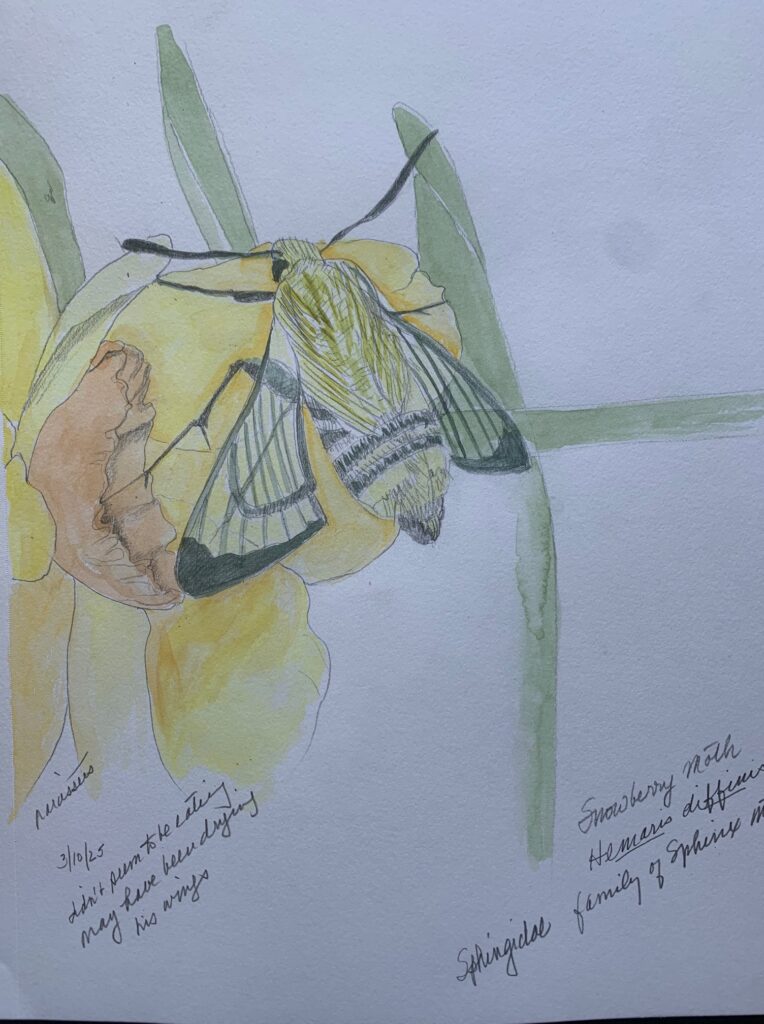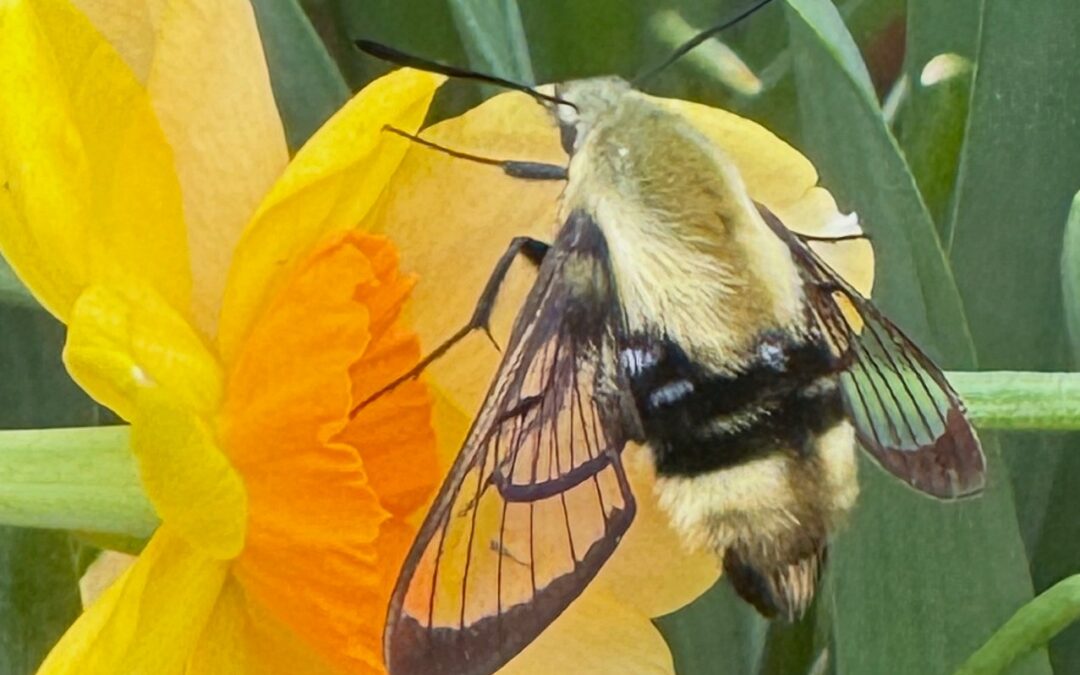In the beautiful garden that my daughter tends in her backyard, an unusual “bee” was pollinating a daffodil. I rarely see bees attracted to daffodils, but this was a very large pollinator. Looking carefully at the picture she had snapped, we could see that this was not a bee at all. It was a clearwing moth.
There are many clearwing moths with different colors. Their clear wings give them the appearance of a large bee or hornet. This is an asset for a protein-rich moth who would make supper for a baby bird. Mother bird, however, will not be willing to tangle with a bee. After all, who wants to get stung?
Notice that, like other moths, this snowberry moth (Hemaris difffinis) does not have scales like butterflies., but seems to have hairs. If you look closely at her back, you will see a furry edge to her body. The black and yellow stripes make a perfect resemblance to a large bee. Up under the forewings the hind wings are folded in.
Most moths have feathery antennae, but his one has antennae that look solid. How can that be? Usually butterflies have straight antennae with a bulb-like swelling at the end, but moths have feathered antennae. This is clearly a different kind of antenna.
This moth has a very long tongue. It is not visible in this photograph, but her proboscis allows her to reach down into a tunnel-like flower. The daffodil has a large tunnel, but some flowers, such as a snapdragon or a honeysuckle have long thin throats. This narrow passage makes it difficult for a bumble bee to squeeze inside to collect nectar. But the thin threadlike proboscis of a hawk moth makes it easy to reach inside and grab the nectar.

A few years ago I painted the white-lined sphinx moth (Hyles lineata) on Fireweed. It was toward the late summer when the fireweed blooms along the side of the road in northern Wisconsin. The fireweed has a long narrow pistil that hides the nectar at the base. These sphinx moths can reach down inside to extract the nectar. Sphinx moths are often called “hummingbird moths,” because they hover over the flowers to find the nectar.
These moths are not nocturnal like most of our moths. They usually fly during the late afternoon or early evening. Most moths fly at night, so we have trouble seeing them even when we are out and about after dark.
Moths are responsible for pollinating many of our flowers. They are usually attracted to light colored flowers. White flowers, in particular, show up well after dark. Perhaps many of our white blossoming apple trees are pollinated by moths.
Hawk moth caterpillars are usually large and green. They are referred to as hornworms, because they have a long pointed “horn” above their heads. Caterpillars that eat tobacco and tomatoes are particularly well recognized pests in the United States. Tomato hornworms eat garden fruit of the family Solanaceae, such as eggplants, potatoes, tomatoes and peppers.
If you see an interesting insect, pull out your phone camera and send us a picture. It’s fun to share what you see as you walk, and we will learn something new, too. Late afternoon and early evening are good times to catch a glimpse of moths.


